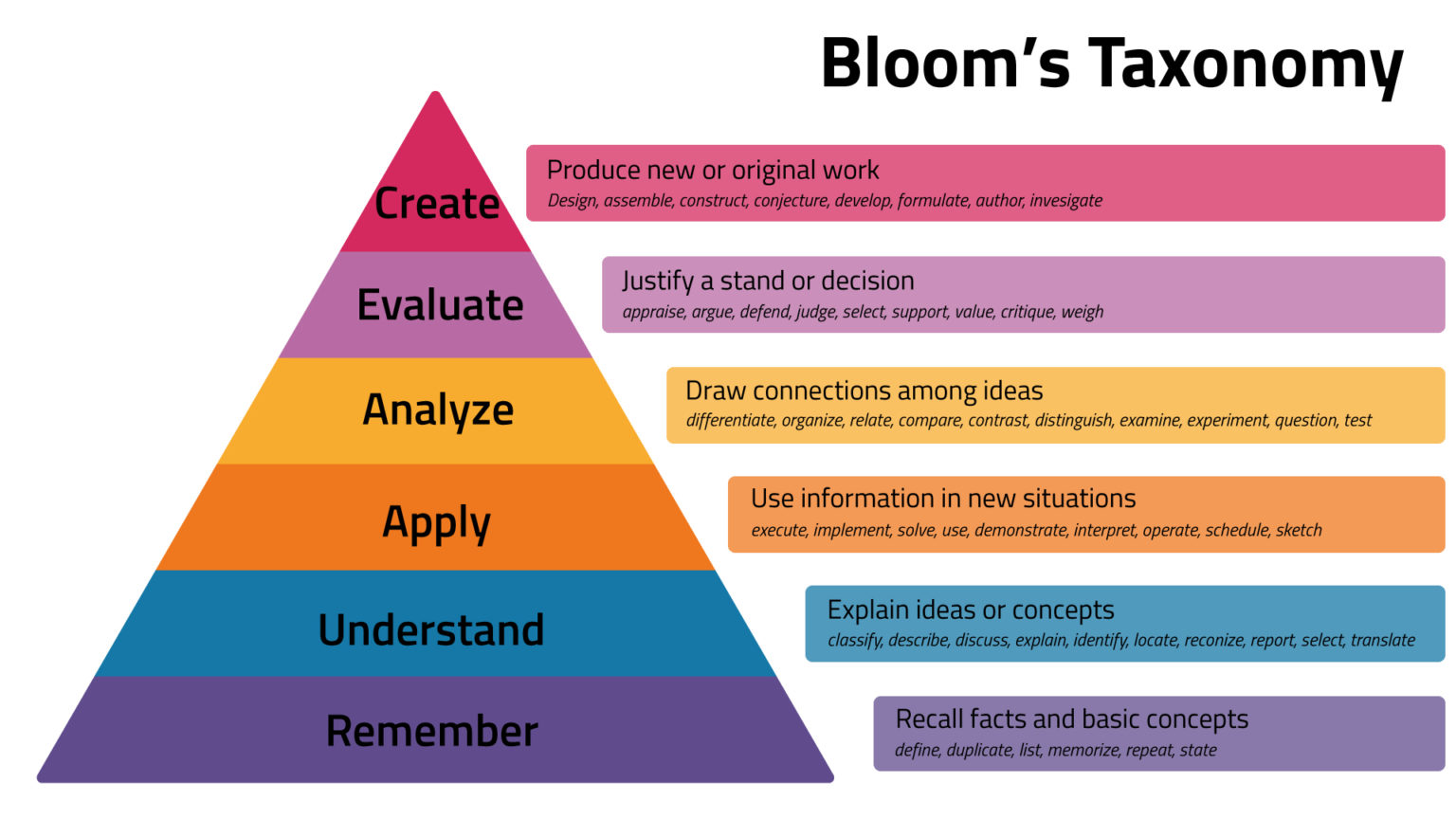
Taxonomie de Bloom, formation et Réalité Virtuelle ? Eureka ! WiDiD
7 november 2023 De taxonomie van Bloom geeft mogelijkheden om activiteiten rijker te maken. In de taxonomie worden zes denkniveaus onderscheiden: onthouden, begrijpen, toepassen, analyseren, evalueren en creëren. De niveaus dienen om een onderscheid te maken in de complexiteit van het denkniveau waar een beroep op wordt gedaan.

Taxonomie Van Bloom
De taxonomie van Bloom is een van de meest gebruikte manieren om verschillende kennisniveaus in te delen. De onderwijspsycholoog Benjamin Bloom bedacht deze taxonomie als algemeen model voor de doelstellingen van het leerproces. De taxonomie van Bloom onderscheidt zes niveaus, die oplopen in moeilijkheidsgraad: Onthouden Begrijpen Toepassen
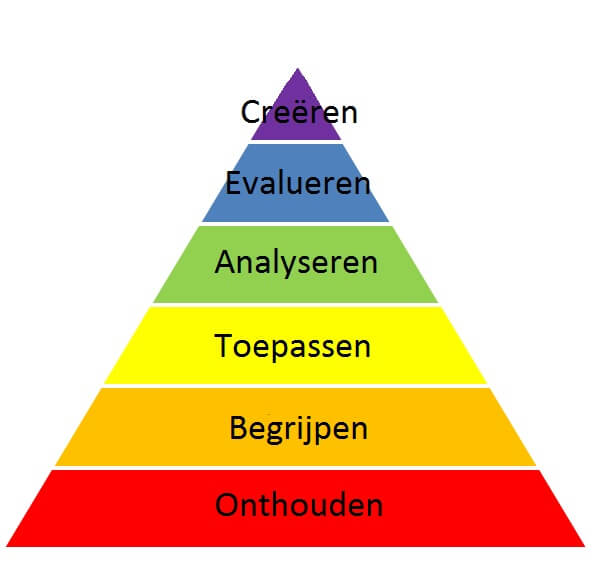
Optimaliseren van leerrendement De (aangepaste) taxonomie van Bloom Haagse Hoogvliegers
Bloom's taxonomy differentiates between cognitive skill levels and calls attention to learning objectives that require higher levels of cognitive skills and, therefore, lead to deeper learning and transfer of knowledge and skills to a greater variety of tasks and contexts.

Wat is de taxonomie van Bloom? agile4all
A group of cognitive psychologists, curriculum theorists and instructional researchers, and testing and assessment specialists published in 2001 a revision of Bloom's Taxonomy with the title A Taxonomy for Teaching, Learning, and Assessment. This title draws attention away from the somewhat static notion of "educational objectives" (in.

Taxonomie Van Bloom
Meer informatie op: https://talentstimuleren.nl/thema/stimulerend-signaleren/rijke-leeractiviteiten/taxonomie-van-bloom-- Created using Powtoon -- Free sign.
/5857112597_eae735e2af_o-58ac97533df78c345b72a141.jpg)
How to Construct a Bloom's Taxonomy Assessment
A group of cognitive psychologists, curriculum theorists and instructional researchers, and testing and assessment specialists published in 2001 a revision of Bloom's Taxonomy with the title A Taxonomy for Teaching, Learning, and Assessment.

De taxonomie van Bloom en eLearning Onyx Online Learning
Bloom's taxonomy is a set of three hierarchical models used for classification of educational learning objectives into levels of complexity and specificity. The three lists cover the learning objectives in cognitive, affective and psychomotor domains.

GO! Pro De taxonomie van Bloom uit de doeken
Bloom's taxonomy is divided into six levels: remembering, understanding, applying, analysing, evaluating, and creating. The levels serve to differentiate in complexity of the knowledge level required. It does not describe an order in which certain levels should be addressed. Rich learning activities should address multiple levels.

De Taxonomie van Bloom l Blog l September Onderwijs
Bloom's Order of Learning Behaviors Before referencing in APA style, it is helpful to know the six learning behaviors of Bloom's Taxonomy as creating, evaluating, analyzing, applying, understanding and remembering. Additionally, the three named learning domains are cognitive, affective and psychomotor.
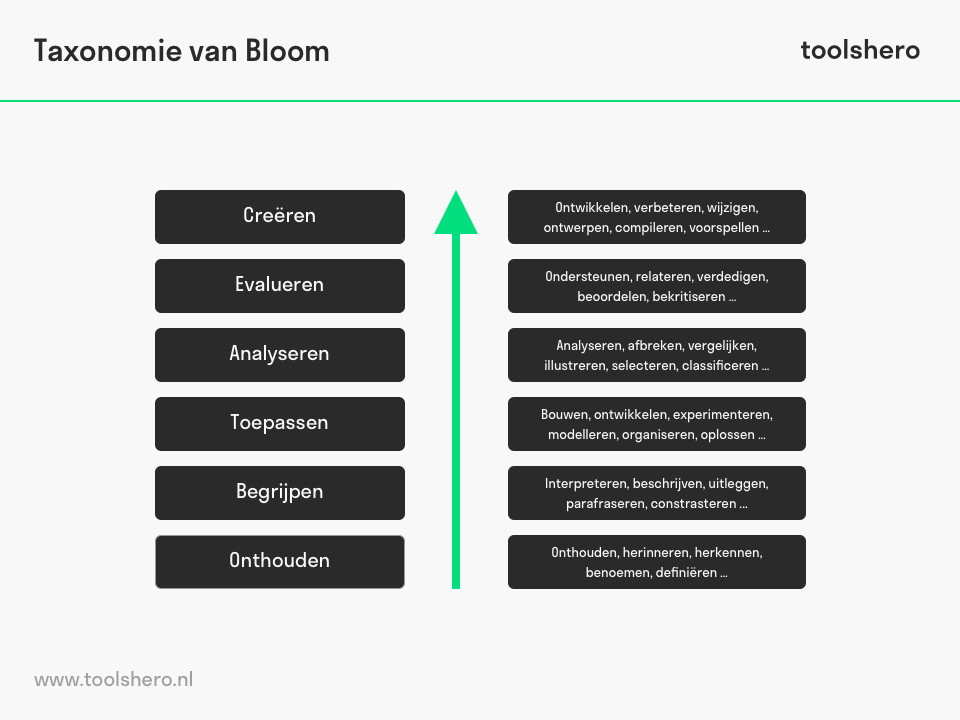
Taxonomie van Bloom de uitleg Toolshero
De taxonomie van Bloom heeft denkvaardigheden geclassificeerd. De taxonomie kent een kennis- en een handelingsdimensie. De taxonomie ordent de denkvaardigheden naar lagere en hogere denkvaardigheden. Elk volgend (denk)niveau waarop gehandeld moet worden, is complexer. De (enigszins aangepaste) taxonomie van Bloom onderscheidt twee dimensies.

Wat is de taxonomie van Bloom? agile4all
What is Bloom's Taxonomy? Bloom distinguishes between six levels of thinking. The first two levels, remembering and understanding,tend to stimulate superficial learning. Students take in information and are capable of reproducing this information. A drawback of this type of learning is that new information is easily forgotten again.
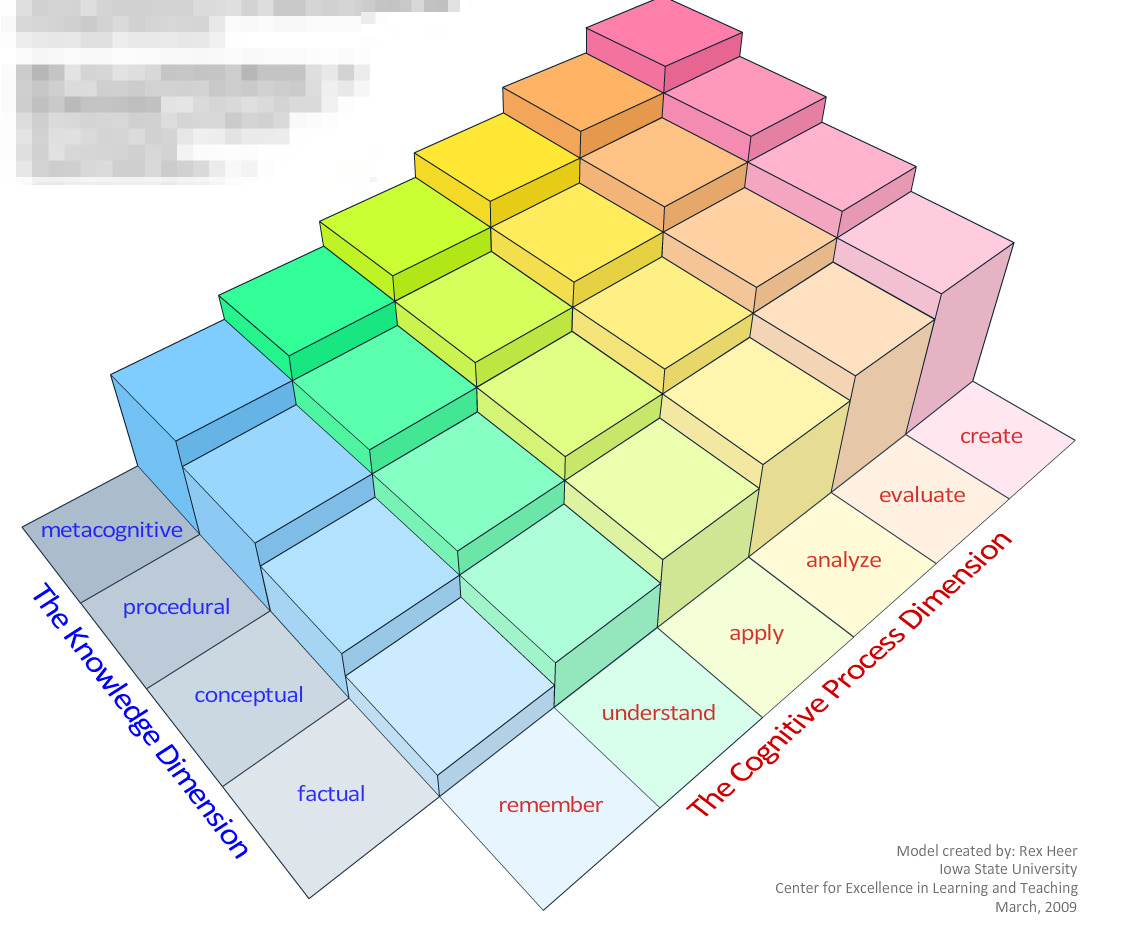
Leerdoelen en de taxonomie van Bloom over leren en ICT
Bloom's Taxonomy is actually a set of three different models, exploring three separate aspects (or "domains") of thinking and learning. These domains are: Cognitive - knowledge-based learning. Affective - emotional learning, including how we handle feelings and develop attitudes. Sensory - physical learning: sensing, moving and manipulating.

Taxonomie van Bloom Schoolupdate academie
De taxonomie van Bloom drukt het cognitieve leerproces uit in een reeks werkwoorden en wordt gebruikt om uitgebreidere vormen van denken te stimuleren zoals het analyseren en evalueren van procedures, processen, principes en concepten. Het raamwerk is bijzonder effectief bij het ontwerpen van educatieve modules.
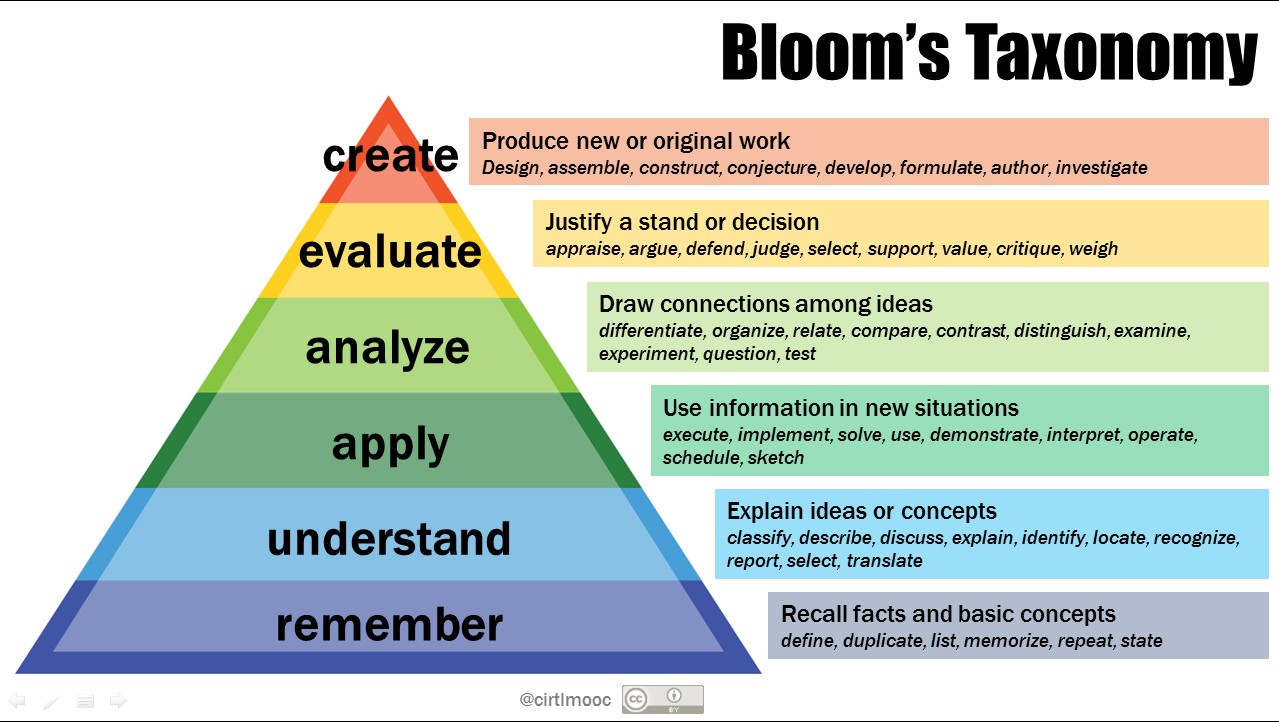
10. Blooms taxonomy Andrea´s Portfolio
Examining. To change or create into some‐. To justify. Presenting and defend‐. formation from the text. Demonstrating basic understanding of facts and ideas. and breaking information into parts by thing new.

Taxonomie van Bloom de wondere wereld van ict
Bloom's Taxonomy. Bloom's Taxonomy categorizes skills that students are expected to attain as learning progresses. Originally published in 1956, the tool is named after Benjamin Bloom, who was the Associate Director of the Board of Examinations at the University of Chicago. Now a classic arrangement of intellectual skills, the taxonomy and.

Taxonomie Van Bloom
Bloom's taxonomy fostered a common vocabulary for thinking about learning goals. It engendered a means of aligning educational goals, curricula, and assessments, and it provided a structure for instructional activities and curriculum. Bloom and a group of assessment experts he had assembled began their work in 1949 and completed their efforts.